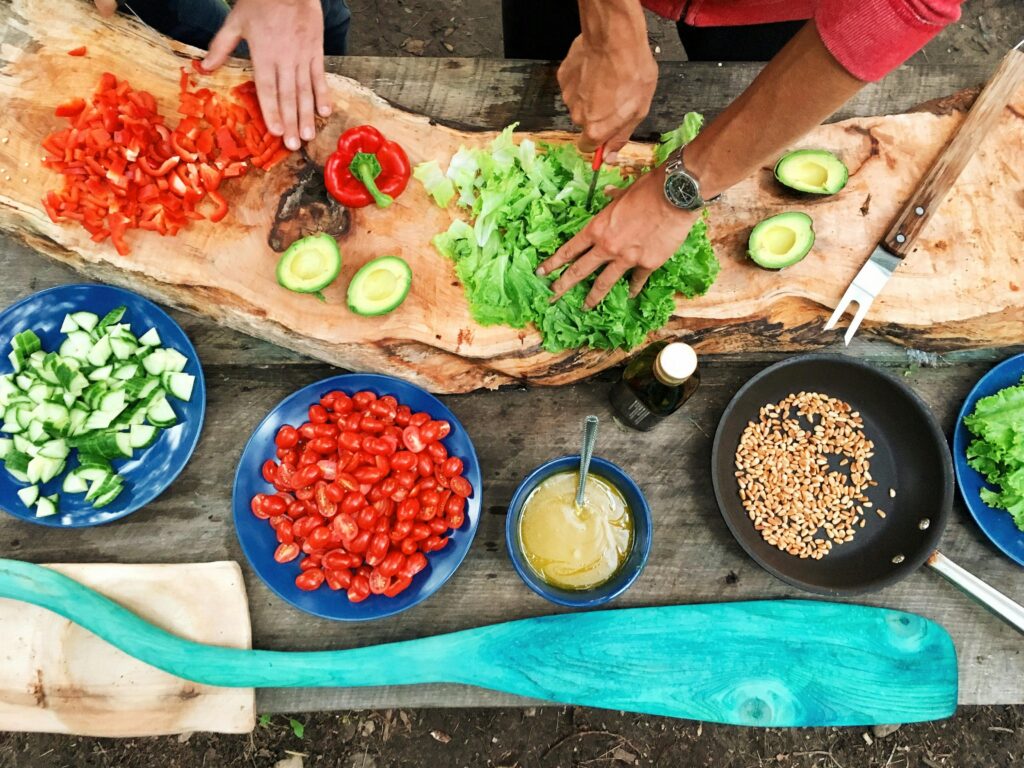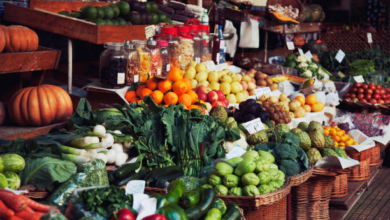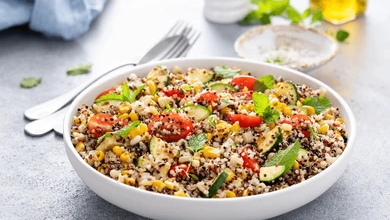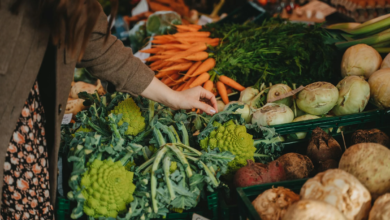Global Flavors: Exploring International Food Trends
Discover the exciting world of global food trends. Explore unique flavors and try recipes inspired by Asian, European, Latin American, Middle Eastern, and African cuisines.

In today’s culinary landscape, the influence of global food trends on local cuisine is more pronounced than ever. Chefs and home cooks alike are increasingly drawing inspiration from the rich and diverse culinary traditions of different cultures, creating dishes that are both innovative and deeply rooted in heritage. This fusion of flavors not only broadens our palate but also brings us closer to understanding and appreciating the world’s myriad food cultures. In this article, we will explore exciting international food trends, delve into unique flavor profiles, and offer recipes that showcase the best of global cuisine.
Global Food Trends in Different Regions
Let’s take a culinary journey around the world and explore the current global food trends in various regions:
Asia: Street Food and Fusion Cuisine Street food continues to be a major influence in Asian cuisine, with bold flavors and innovative combinations. Fusion cuisine, blending traditional Asian ingredients with Western techniques, is also gaining popularity. Think sushi burritos and kimchi tacos.
Europe: Farm-to-Table and Traditional Recipes with Modern Twists In Europe, the farm-to-table movement emphasizes fresh, locally-sourced ingredients. Traditional recipes are being reimagined with modern twists, such as deconstructed shepherd’s pie or truffle-infused pasta dishes.
Latin America: Indigenous Ingredients and Culinary Heritage Latin American cuisine is experiencing a resurgence of indigenous ingredients like quinoa, amaranth, and aji peppers. There’s also a strong emphasis on culinary heritage, with chefs honoring traditional cooking methods and recipes.
Middle East and Africa: Rich Spices and Ancient Cooking Methods The Middle East and Africa are known for their rich, aromatic spices and ancient cooking methods. Dishes like tagines and injera reflect centuries-old traditions that continue to captivate food lovers worldwide.
Flavor Profiles
Each region brings unique flavors and ingredients that define their culinary identity:
Asia: Umami, Soy, Ginger, and Fermented Flavors Asian cuisine is characterized by its umami-rich ingredients such as soy sauce, miso, and fermented vegetables. Fresh ginger, garlic, and sesame oil are also staples that add depth and complexity.
Europe: Fresh Herbs, Cheeses, and Olive Oil European dishes often feature fresh herbs like basil, rosemary, and thyme. High-quality cheeses and olive oil are key components, contributing to the region’s renowned culinary richness.
Latin America: Citrus, Chili, and Tropical Fruits Latin American cuisine is vibrant and bold, with citrusy notes from lime and orange, the heat of various chilies, and the sweetness of tropical fruits like mango and pineapple.
Middle East and Africa: Spices like Cumin, Coriander, and Cardamom The flavors of the Middle East and Africa are defined by an extensive use of spices. Cumin, coriander, and cardamom are frequently used, along with rich blends like ras el hanout and berbere.
Recipe Suggestions
Bring global flavors to your kitchen with these recipes inspired by international cuisines:
Asian-inspired Dish: Spicy Korean BBQ
- Ingredients: Korean BBQ sauce, beef short ribs, garlic, ginger, green onions, sesame seeds
- Instructions: Marinate beef short ribs in Korean BBQ sauce with minced garlic and ginger. Grill until caramelized, garnish with green onions and sesame seeds, and serve with steamed rice. Read the full recipe here :
European-inspired Dish: Mediterranean Herb-Crusted Lamb
- Ingredients: Lamb rack, rosemary, thyme, garlic, olive oil, breadcrumbs, lemon zest
- Instructions: Rub the lamb rack with a mixture of minced garlic, chopped rosemary, thyme, olive oil, breadcrumbs, and lemon zest. Roast until the lamb reaches your desired doneness. Serve with roasted vegetables. Read the full recipe here :
Latin American-inspired Dish: Peruvian Ceviche
- Ingredients: Fresh fish (such as sea bass), lime juice, red onion, cilantro, aji amarillo, sweet potato, corn
- Instructions: Dice the fish and marinate it in lime juice with sliced red onion, chopped cilantro, and aji amarillo. Serve with boiled sweet potato and corn on the cob. Read the full recipe here :
Middle Eastern-inspired Dish: Moroccan Tagine
- Ingredients: Chicken thighs, onions, garlic, ginger, saffron, preserved lemons, olives, ras el hanout, chicken broth
- Instructions: Sauté onions, garlic, and ginger. Add chicken thighs, saffron, preserved lemons, olives, ras el hanout, and chicken broth. Simmer until the chicken is tender. Serve with couscous. Read the full recipe here :
Exploring and experimenting with global food trends in your cooking not only enhances your culinary skills but also provides a delicious way to experience different cultures. By incorporating international ingredients and techniques, you can transform everyday meals into extraordinary culinary adventures. So, don your apron, gather your ingredients, and embark on a flavorful journey around the world from the comfort of your kitchen.
Frequently Asked Questions (FAQs)
What are the key global food trends currently?
Key global food trends include the rise of street food and fusion cuisine in Asia, the farm-to-table movement in Europe, the resurgence of indigenous ingredients in Latin America, and the use of rich spices and ancient cooking methods in the Middle East and Africa.
How can I incorporate global flavors into my cooking?
Incorporate global flavors by experimenting with ingredients and recipes from different cultures. Start with simple dishes like Spicy Korean BBQ, Mediterranean Herb-Crusted Lamb, Peruvian Ceviche, and Moroccan Tagine.
Why is understanding global food trends important?
Understanding global food trends is important as it broadens your culinary skills, helps you appreciate different cultures, and allows you to create innovative dishes that combine diverse flavors and techniques.




